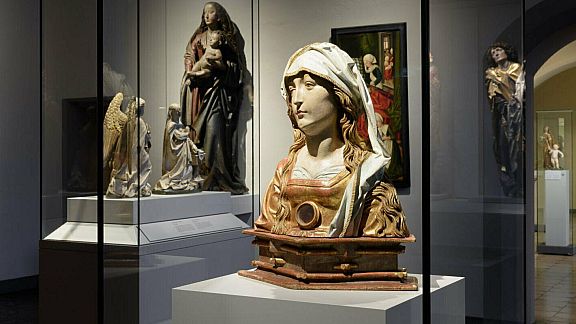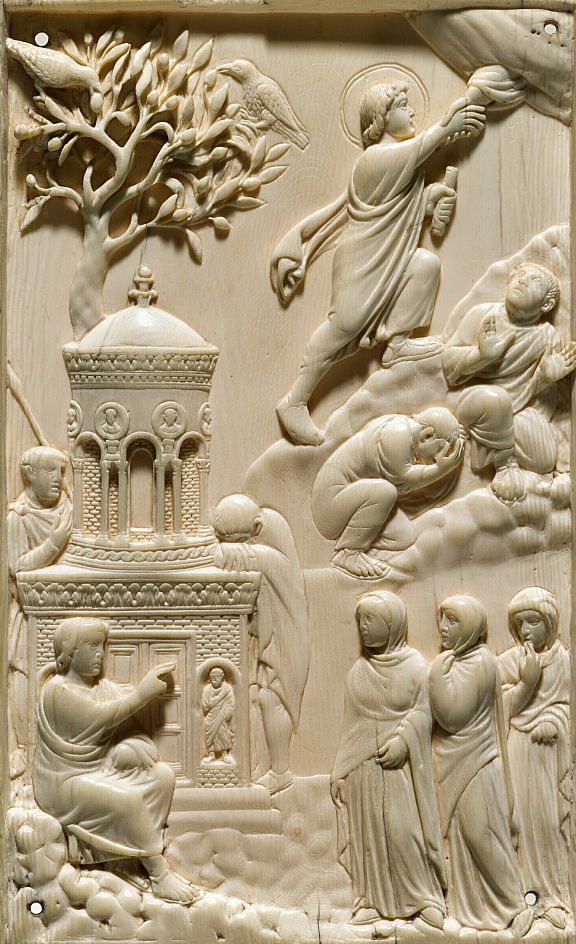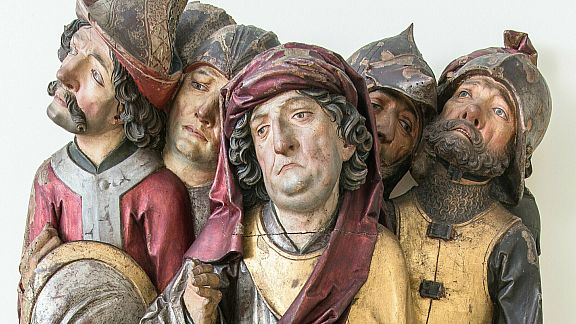Collection
Top 12
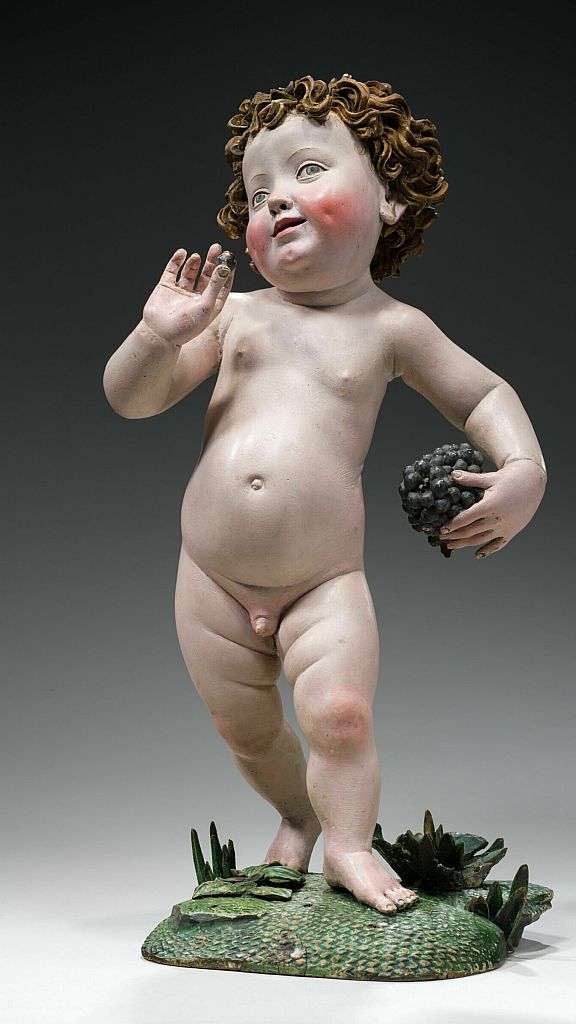

The figure is the most beautiful and famous late Gothic Christ child from Germany. His sassy look, rosy cheeks, chubby features and balancing step masterfully renders the curious impartiality of a toddler. The child offering the grape is also a brilliant idea. Its inviting gesture initiates a dialogue thereby casting a spell on the observer.
The infant Jesus with grapes
Ulm, ca 1470


One of the greatest sensations of Parisian nightlife at the end of the 19th
century was the erotic Serpentine Dance with its theatrical lighting effects by the American dancer Loïe Fuller. The oscillating shapes created with flowing silk fabric and expressive dance motions hit the mark of the Art Nouveau movement. The decorative bronze statuette serves as a table lamp and is a most formidable memorial to the danced Art Nouveau style.
Loïe fuller dancing with veils
Francois Raoul Larche, Paris, ca 1900


Octavio and Isabella are the dream couple of the Commedia dell'arte, the Italian stand-up theatre of the Baroque period. The figures modelled at the Nymphenburg Porcelain Factory mark the high point of 18th
century South German porcelain statuettes. Lively facial expressions and expressive body language are grandly captured and masterfully rendered.
Isabella und Octavio
Franz Anton Bustelli, Porcelain Factory Neudeck-Nymphenburg, ca 1760

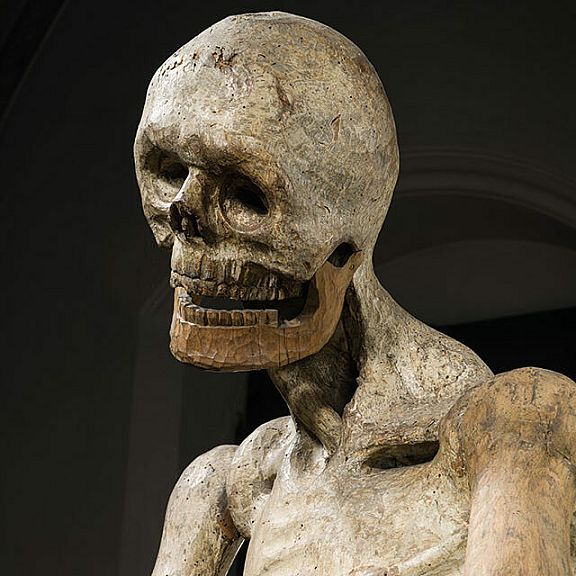
Death riding the lion belonged to a monumental clock in the Heilsbronn Abbey in the district of Ansbach near Nuremberg. The two figures united artistic ingenuity with a perfect mechanism. Death, who even subdued the king of beasts, struck the hours with a bone and moved his lower jaw at the same time. Here Death serves as a drastic reminder of the transience of earthly existence.
Clock Figure of Death Mounted on a Lion
Nuremburg, 1513


The elaborately decorated ceremonial armour demonstrates the virtuosity of southern German armourers. The original wooden figurine inside the suit of armour is rather unusual; however, it keeps the armour in a stable position. The figurine’s nearly life-like expression and relaxed posture gives this status symbol in steel a certain liveliness.
Suit of Armour Owned by Hans Conrad von Pienzenau
Nuremberg or Augsburg, ca 1550


For his collection of gold coins from antiquity, Elector Maximilian I of Bavaria had a cabinet made completely covered in ivory. With remarkably opulent and intricate reliefs, this spectacular piece of furniture is a splendid example of Baroque decorative arts. Purposefully executed in the colours of Bavaria, the cabinet’s interior features an impressive alternation of white ivory and blue lapislazuli.
Coin cabinet of Elector Maximilian I.
Christoph Angermair the Elder, Munich, 1618-1624


The biblical Judith beheaded the army commander Holofernes in his sleep, thereby putting his forces to flight. The pious beauty had thus defeated him twice – first with her allure, then with the sword. The alabaster statuette combines the ideal nude with an elaborate updo hairstyle and, in a hitherto unprecedented manner, links eroticism with female heroic virtue.
Judith with the Head of Holofernes
Conrad Meit, Mecheln, ca 1525/28


The life-size Mary Magdalene once hovered in the centre of the winged altarpiece of the parish church in Münnerstadt in Lower Franconia. According to legend, the sinner of the New Testament went to the desert to atone for her wantonness. By divine providence, she grew a coat of hair that covered her nakedness.
The original arrangement of the curly strands of her hair as well as the imaginative choice of the bare patches on her body are evidence of particular artistic genius.
Elevation of St Mary Magdalene
Tilman Riemenschneider, Würzburg, 1490/92


This luxurious drinking vessel, designed as the head of a young Black man, is a unique Renaissance masterpiece. At the same time, it is an excellent reflection of the attraction of the exotic and foreign in the Age of Exploration. The grace inscribed in the face of the mysterious youth, his features marked by sovereignty and dignity, bear witness to the goldsmith's innovative genius.
Goblet in the form of the head of a young black man
Christoph Jamnitzer, Nuremberg, 1593/1602
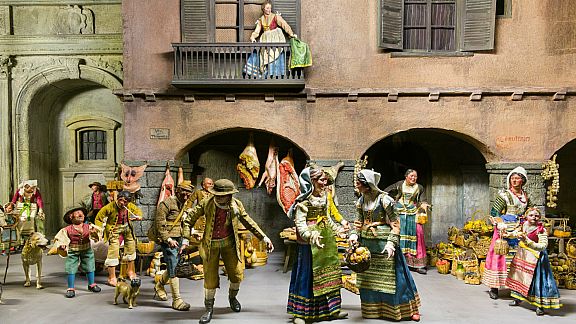

Pork sides, poultry, seafood, fish, fruit and vegetables all belong to the sumptuous offerings of a street market that is part of a Nativity Scene.
This is how Neapolitan artists transposed the birth of Christ into the bustling life of their time – between the haggling and chatter of the street sellers and market folk, the stray dogs, and the drying laundry. Magnificent art and real spectacle!
Crèche with a lane in Naples with market scenes
Naples, second half 18th century

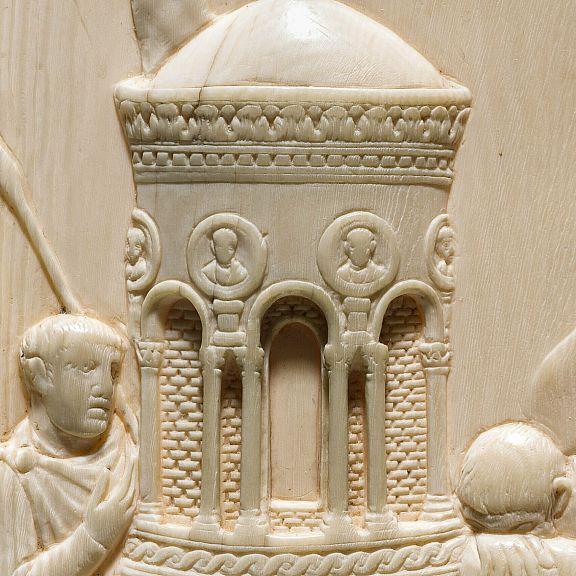
The Late Antique ivory panel is the only sculptural representation of the original Church of the Holy Sepulchre in Jerusalem. The building, consecrated in the year 335 CE, was completely destroyed in 1009.
The relief is also one of the oldest depictions of the Resurrection and Ascension of Christ. The rendering of the sitter's gestures and movements testifies to a particular refinement. The graceful carving of the tree crown exemplifies the artist’s outstanding talent.
Resurrection and Ascension of Christ, known as the “Reider-panel”
Rome or Milan, ca 400


Numerous intact corpses were discovered inside the crypt of the counts Palatine in the church of Lauingen when it was unsealed in 1781. Today, these outstandingly well-preserved garments convey a unique, authentic picture of the courtly fashion of the late Renaissance. They also bear unambiguous historical evidence of their owners. The dress of Countess Palatine Dorothea Sabina, made of fine silk velvet, revealing the influence of the Spanish courtly attire and clearly conveys how enviably slender the waistline of the countess was.
Dress of the palgravine dorothea sabina
South Germany, ca 1598
Art periods-Highlights
Highlights

Sculpture

Ivory

Glass

Religion and faith

Goldsmith's art
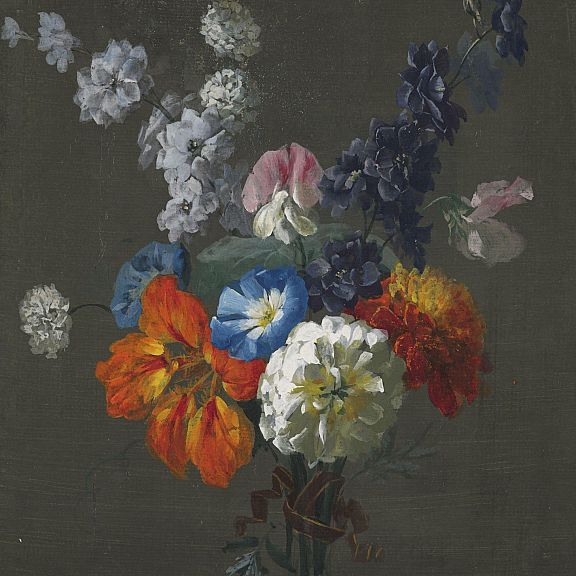
Graphic

Interiors

Ceramics

Nativity scenes

Painting

Fashion and accessories

Models

Furniture

Musical Instruments

Porcelain

Justice and punishment

Games and toys
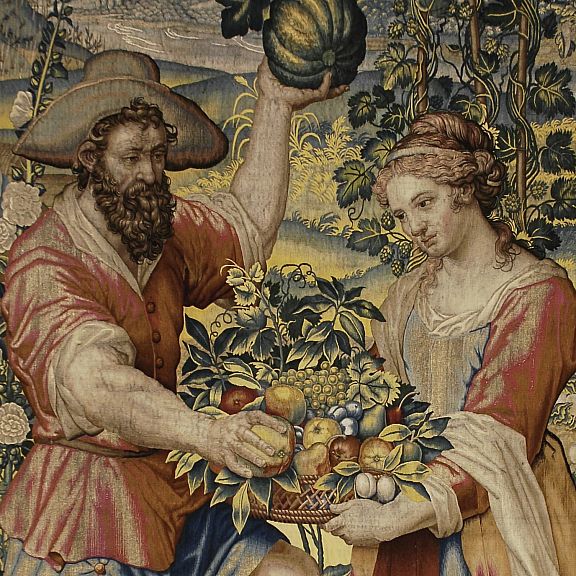
Textiles
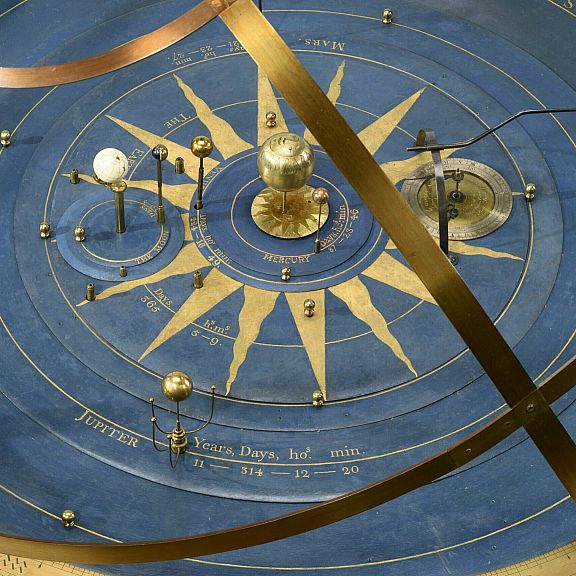
Clocks and scientific instruments

Arms and armour

